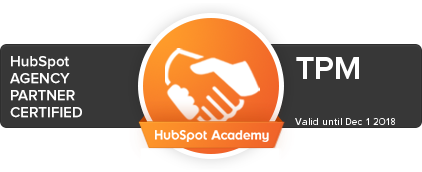Two Secrets to B2B Sales Strategy Success for New Brands
- Dean Ara
- January 24, 2020

It’s not easy to build up a list of clients — or even warm leads — in the business-to-business sector today. Frankly, it’s downright tough.
Unless you’re serving a very niche market, the odds are good that you’ve got lots of competition. And if you’re a relatively new brand that hasn’t established a following yet, that competition was probably there before you. If you’re going to make your mark, you’re going to need more than just hard work and a “can-do” attitude. You need a killer B2B sales strategy.
Marketing and sales experts of all flavors will offer you suggestions. Tactics to build up an audience. You should blog. Try email. Get active on social media. Invest in paid advertising. And each one of those suggestions has merit and may deserve a place in your B2B marketing strategy.
But the hard truth is this: there is no secret trick or marketing magic that’s going to solve your problem. Trust me, I wish I could tell you otherwise.
The long and the short of it is this: if your brand is relatively unknown, you have two options to build demand:
- Get out there and do the work to build up a list of successes
- Make sure you get referrals from anyone you work for
I’ve spent a lot of time helping clients develop their B2B sales strategy. I’ve used blogs, email campaigns, social media platforms and even paid ads to help them attract attention. But none of those methods even come close to being as effective as the options I listed above.
Let me explain.
A lot of traditional marketing strategies rely on getting your message to people. But before people will read your blog posts, open your emails, or like your Facebook posts, they need to see you. And there are ways to build organic traffic to your website and get eyes on content. But once people find you, they still need a reason to trust you. And that’s where the thing I’m talking about come in. Let’s talk about how you can make that trust happen.
Two Secrets to B2B Sales Strategy Success for New Brands

Secret 1: Show Them Your Work
I’m going to assume that most of you reading this didn’t get into business to focus on marketing. That doesn’t automatically mean you’re bad at it. But it’s not your passion. It’s not your forte. Selling yourself is not the unique value you bring to your B2B customers.
To demonstrate your value, you need, well… an opportunity to demonstrate your value. What does that look like? It’s being able to point to examples of what you offer that set you apart from your competitors. But how do you do that?
Use Your Connections
Do you know people at organizations that would benefit from what you sell? Talk to them. Ask for a chance to pitch. Get your foot in the door. Have industry connections on LinkedIn who could be suitable leads? Corporate networking is what that platform is all about. Find industry-specific job boards or networking events. Get your face known. Do what you need to do to get people to give you a chance.
There’s a caveat here, though. Whatever you do, do not blindly spam every contact you have. Spend some time sorting through your potential prospects, researching what their needs are, and craft a pitch that shows you recognize those needs.
Have personal contacts who might be able to connect you to someone in the industry you’re targeting? Craft a pitch for them too. Don’t just send them off to blindly promote you without a clear idea of your value proposition.
Lower Your Rates (to Get What You Need)
This is a tricky one.
Offering discounts to attract new customers is a common practice in the B2C world. But lowering rates as part of your B2B strategy can be controversial. Many experts will tell you that cutting rates to gain clients shows you lack confidence in the value of your offering. It sets a bad precedent for future contracts. Not to mention that discounts will cut into your margins and affect your organization’s ability to invest in growth.
But before you decide that discounts are not for you, hear me out. There are ways to strategically cut rates that can help you build your business. (Strategic is the key word here.) Every form of marketing requires some investment on your part. Discounting is no different. Value-based discounting can take the form of:
- Discounts in exchange for a specific commitment (a one-year contract, for example)
- Contract modifications that offer a discount in exchange for something (pushing back a deadline, providing a testimonial or case study after work is done)
- Discounts for larger, higher-profile clients that will help establish your reputation
Show Them What You’re Worth
Obviously, you believe in what you have to offer. You know you can bring value to clients. But your audience doesn’t know that. And, if you’re a relatively unknown entity, they have no reason to take your word for it.
Once you get your foot in the door — whether you’re meeting a lead in person, talking on the phone, or communicating via email — make sure you’re prepared to back up your claims.
Do your research. Interview any existing clients you have to get feedback on what you sell. Before you start pitching, know what your leads’ pain points are, and what impact your solution will yield. Provide them with clear metrics on the ROI of working with you:
- How much will you save them each year?
- What kind of reduction in errors will they see?
- What tangible benefits will you offer that their current provider (or your competitors) don’t?

Secret 2: Ask for Referrals
Referrals are, far and away, the best bang for your marketing buck. Some 78% of marketers say including referrals in their B2B sales strategy generates good or excellent leads — and the cost of getting them is simply being good at what you do.
But if referrals are such a cornerstone of B2B marketing, why isn’t everyone using them all the time? You might not believe this, but many marketers don’t know how.
I should clarify. It’s not hard to post a flattering quote from a client on your website or meet up with a potential customer who has heard about you from a colleague. That’s the easy part. Getting referrals is the step where many B2B salespeople fall flat.
Here are some of the main reasons B2B referral programs fail.
Your Customer Was Unhappy
First of all, make sure you’re delivering a quality product that meets client needs. But second, make sure that any followup you do asking for referrals gauges their satisfaction first.
Asking for recommendations from an unhappy client comes across as tone-deaf (if you’re lucky) and makes it clear you’re more interested in sales than clients.
You Didn’t Ask When You Should Have
Very rarely, a customer may be so over the moon with the service or product you’ve provided that they’ll actively spread the word about you or give you an unprompted review or testimonial you can include in your marketing. Trust me, those clients are the exception, not the rule.
Once your work for a customer is finished (or in the case of ongoing projects, hits a milestone), you can’t be afraid to ask them for a recommendation. Ask early. Ask often.
Waiting too long after your business relationship has ended to ask for a referral means the value you provided has faded from their minds. You’ve missed your chance.
You Made It Too Much Work
Especially in the B2B market, it’s critical to remember that your clients — like you — are operating a business and have many demands on their time. Even if they’re totally satisfied with your work, sitting down to write a referral or testimonial is probably not at the top of their list of things to do.
Be smart about it. Include an example of what you’d like them to say in your request for a referral. You give them an easy starting point. If you’re lucky, they might even use your suggestions verbatim.
Does Your B2B Sales Strategy Need Work?
Fair warning: B2B marketing is tough. It’s hard work, and it’s almost never sexy. The slick commercials that B2C brand produce to go viral won’t work for you. Your B2B sales strategy is going to be about slowly building trust and educating your audience. You’re the tortoise, not the hare.
Building a B2B brand is never going to be an easy task. But that doesn’t mean you can’t be smart about it. Use the tactics I’ve talked about today. If you take the time to be strategic in your approach and not just throw all the latest marketing techniques at the wall and hope they stick, you’ll be alright in time.
Is your B2B sales strategy letting you down? Are you a new brand trying to build an audience? Talk to the team at TPM. They have years of experience developing B2B marketing strategies in the technology and cloud sectors. Let them help you. Get more information now.



